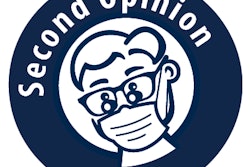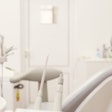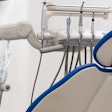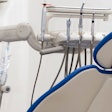
Dentists working in a dental service organization (DSO) are more satisfied with the amount of hours worked during a week, but less so with their income, compared with dentists working with dentist-owned-and-operated practices (DOOs), according to a new brief by the ADA Health Policy Institute.
Dentists who work for a dental management organization affiliated group practice (DMOA) earn about $15,000 less than their peers at DOOs, but they spend an hour a week less on nonclinical tasks and are less likely to work on weekends, according to the brief.
 Marko Vujicic, PhD.
Marko Vujicic, PhD.The authors reported that dentists who work in a DMOA were 35% less likely to answer yes to the statement "Knowing what I know now, I would make the same decision to go into dentistry," compared with DOO dentists. These dentists were also 40% less likely to answer yes to the statement "My current practice situation is what I envisioned when I chose to become a dentist." In addition, the DMOA dentists were 62% more likely to report feeling "emotionally drained from dentistry," the authors wrote.
Marko Vujicic, PhD, chief economist and vice president of the institute, is one of the authors of the brief. This survey may cast into doubt some of the conventional wisdom concerning job satisfaction for dentists, he said in an interview with DrBicuspid.com.
"There is a diverse set of practice settings, and people value those differently," he said. "It's not such a clear-cut, easy answer to say, 'Is satisfaction higher here or there?' "
Income differences
The brief, titled "Job satisfaction among dentists varies by type of large group practice setting," was published in August 2015. The purpose of the brief was to examine the career satisfaction of dentists working in two kinds of large group practices, DOOs and DMOAs.
Surveys were emailed to more than 5,200 dentists from DOOs, DMOAs, and other types of large group practices. More than 860 dentists responded, for a response rate of 16.6%. More than 180 (24.9%) of the respondents were DOO dentists, while more than 650 (16.7%) were DMOA dentists. An additional 27 (5%) of the respondents were from other types of large group practice. The authors emphasized that the respondents represent a "cross-sectional snapshot" of dentists in large group practice as opposed to being nationally representative.
The overall response rate of 16% was adequate, said Vujicic, noting that he and his co-authors looked at potential sources of biases in the responses, and they felt that the survey is representative.
The survey data enabled the first real income comparison between those who work in the DMOA and DOO models, Vujicic said.
Perhaps unsurprisingly, a greater percentage of respondents who reported an income of more than $300,000 were DOO dentists, but a greater percentage of respondents who reported income between $50,000 and $99,999 also were DOO dentists.
| Income range of DMOA and DOO respondents | ||
| Income range ($) | DMOA (% of respondents) |
DOO (% of respondents) |
| Less than 50,000 | 6% | 1.8% |
| 50,000 to 99,999 | 10.4% | 14.6% |
| 100,000 to 149,999 | 32.1% | 19.4% |
| 150,000 to 199,999 | 19.3% | 20% |
| 200,000 to 249,999 | 12% | 13.9% |
| 250,000 to 299,999 | 7.7% | 9.7% |
| 300,000 or more | 12.5% | 20.6% |
Dissemination of data to dental schools
A major priority is to pass the survey data along to younger dentists, Vujicic said.
"[We want] to get these facts and transparent research into the hands of people coming out of dental school and those in the early stages of their career," he said. "To the extent that dental schools are interested in the data, we are happy to disseminate the information."



















